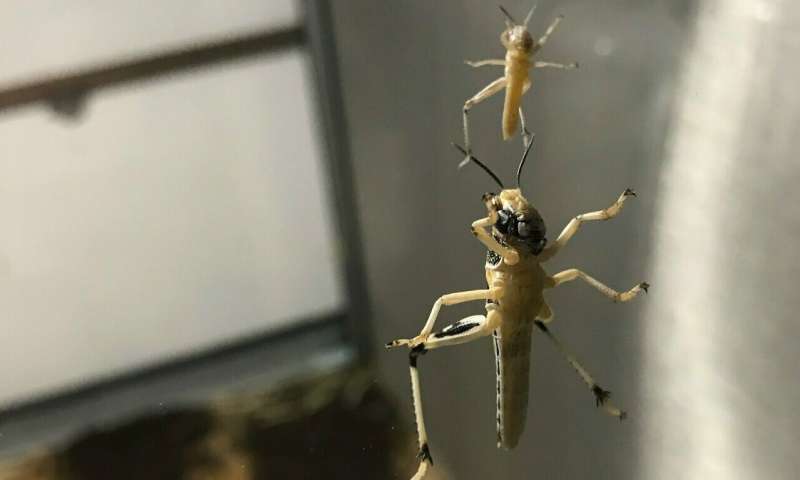
UK researchers are behind a new smartphone app which aims to become the farmer's newest weapon in crop protection.
The team of researchers from the University of Lincoln are designing the specialist app to help farmers in hot climates identify and record the spread of locusts on their land.
By recognising locusts through the smartphone’s camera, the app will be able to identify the stage of the insect’s growth and record its location through the phone’s IP address.
This information can then be accessed by the farmer so that they can use pesticides more accurately and to target the insects in the early stages of their lifespan, significantly reducing the amount of crop damage.
This targeted approach could also reduce pesticide residue levels, leading to increased food safety while maintaining food security, and reduce environmental pollution, protecting nearby water systems.
Each year, approximately 18 million hectares of land are damaged by locusts and grasshoppers, impacting hugely on farmers and their productivity.
Dr Bashir Al-Diri, from University of Lincoln said: “Their monitoring techniques currently rely on field surveys by people through digging insect eggs, but this information only helps farmers to make mid and long term forecasting decisions and can delay effective management measures.
“By digitally recording the exact number, age and location of locusts, we hope this new app will put more knowledge and more power into the hands of the farmers. They will be able to predict insect population and spread, and act quickly and accurately to save their crops.”
'Huge data'
Dr Al-Diri and his team have gathered more than 10,000 images of locusts in various stages of growth to train the system behind the app.
Researchers travelled to China to gather images and videos on location so that the app can recognise a variety of terrain and plant growth, and they have also built specialist facilities in Lincoln to house locusts from their earliest stages of life through to adulthood.
By observing the locusts 24 hours a day, the team has built a huge data set to inform their app, and this collection of thousands of images and videos – the first of its kind in the world – will also be a valuable resource for the wider scientific community.
With its advanced computer vision technology, the developers hope that the app framework will also be used for a wide range of other applications in the future to capture and document information about the natural world.
For example, it could easily be adapted to help individuals identify plant diseases and access expert advice on how to combat them, or to digitally capture the number and type of birds and wildlife in specific locations as part of national and international surveys.
